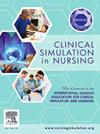将护理专业发展与《医疗保健模拟最佳实践标准》™ 相结合
IF 3.4
3区 医学
Q1 NURSING
引用次数: 0
摘要
背景师资短缺和学生临床实习机会有限都影响了模拟在护理课程中的应用。作为德克萨斯州高等教育协调委员会拨款的一部分,我们为护士教育者和护士教育者研究生开发了一套模拟系列课程,目的是提高护士教育者将模拟作为教学策略的知识、信心和技能。该系列课程是根据《医疗保健模拟最佳实践标准》(Healthcare Simulation Standards of Best Practice™)开发的。该教学设计为由四个部分组成的模拟系列,结合了现场和虚拟部分。完成该系列课程可获得 20 个护理专业发展(NPD)接触学时。结果12 名参与者完成了该系列课程的全部 4 个模块,这限制了数据的普遍性。结论根据既定标准开发与临床和技术相关的模拟教育会对护士教育者提出挑战。护理专业发展可以成为缩小知识、技能和实践差距的工具。本文章由计算机程序翻译,如有差异,请以英文原文为准。
Bridging nursing professional development and Healthcare Simulation Standards of Best Practice™
Background
Both the faculty shortage and limited clinical placement opportunities for students impact the use of simulation in nursing programs. Despite widespread use, many nursing faculty do not have training in simulation best practices and have limited skills and confidence in the use of simulation.
Method
As part of a Texas Higher Education Coordinating Board Grant, a Simulation Series was developed for nurse educators and graduate nurse educator students with the objective of increasing knowledge, confidence and skill as a nurse educator utilizing simulation as a teaching strategy. The series was developed based on the Healthcare Simulation Standards of Best Practice™. The education was designed to be a four-part Simulation Series combining both in person and virtual components. Completion of the series provided 20 contact hours of Nursing Professional Development (NPD).
Results
Twelve participants completed all 4 modules in the series, limiting the generalizability of the data. However, data suggest an overall improvement in knowledge, confidence, and skills.
Conclusions
Development of clinically and technologically relevant simulation education based on set standards can challenge nurse educators. Nursing professional development can be a tool to close the knowledge, skills, and practice gap.
求助全文
通过发布文献求助,成功后即可免费获取论文全文。
去求助
来源期刊

Clinical Simulation in Nursing
NURSING-
CiteScore
5.50
自引率
15.40%
发文量
107
期刊介绍:
Clinical Simulation in Nursing is an international, peer reviewed journal published online monthly. Clinical Simulation in Nursing is the official journal of the International Nursing Association for Clinical Simulation & Learning (INACSL) and reflects its mission to advance the science of healthcare simulation.
We will review and accept articles from other health provider disciplines, if they are determined to be of interest to our readership. The journal accepts manuscripts meeting one or more of the following criteria:
Research articles and literature reviews (e.g. systematic, scoping, umbrella, integrative, etc.) about simulation
Innovative teaching/learning strategies using simulation
Articles updating guidelines, regulations, and legislative policies that impact simulation
Leadership for simulation
Simulation operations
Clinical and academic uses of simulation.
 求助内容:
求助内容: 应助结果提醒方式:
应助结果提醒方式:


